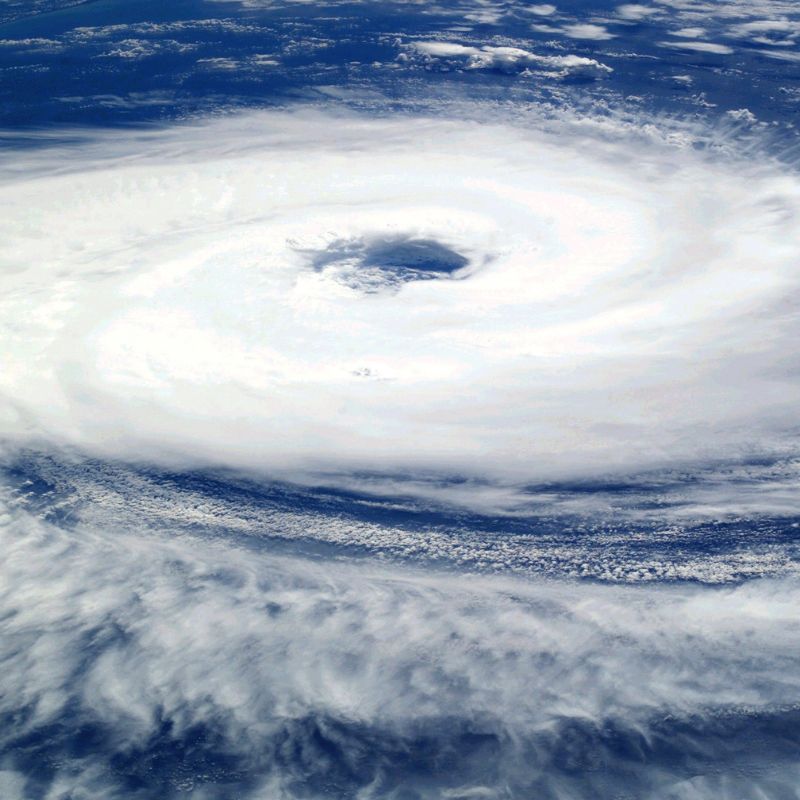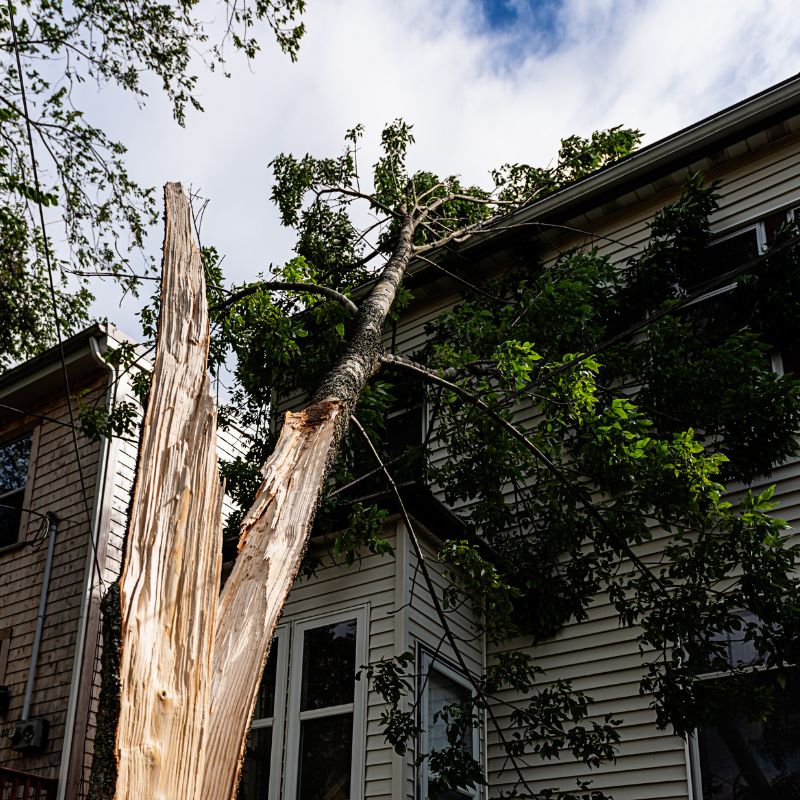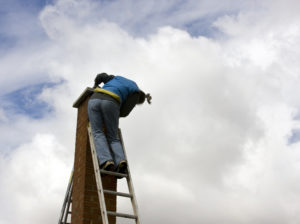URGENT!
Due to the weather, we are experiencing intermittent power outage and loss of internet. Please expect delays and or rescheduling of appointments during this time. We will reach out to you as soon as we can. Stay warm and stay safe!
As residents of Houston, TX, we’re no strangers to the havoc that hurricanes can wreak on our homes and communities. When we know one is coming, we know to focus on securing windows, doors, and outdoor furniture, as well as ensure any emergency supplies are readily accessible. Unfortunately, one aspect that’s often overlooked is the chimney.
Chimneys are especially vulnerable during severe weather conditions – and neglecting them could lead to significant damage. The good news is that there are things you can do to prepare your chimney for hurricane season. And if you have any questions along the way? The Lords Chimney team is here to help. Call or book online today.
Regular chimney inspection services are essential year-round, but become particularly crucial before hurricane season. Hire a professional chimney company, like us, to inspect your chimney for any signs of damage or deterioration.
We can check for loose bricks, cracks in the mortar, damaged flue liners, and anything else that might make your chimney more vulnerable. Then, we’ll ensure you have everything you need to stay as protected as possible.

Another big perk of booking this maintenance now? If you book an inspection right before a hurricane – or other big storm – hits, it increases the likelihood of getting insurance coverage for any hurricane-related damages. You’ll have proof that, before the storm, the chimney was in good condition…and that any damage was in fact a result of the hurricane.
The chimney cap plays a crucial role in protecting your chimney from moisture, debris, and wildlife intrusion. Before hurricane season, inspect the chimney cap for any signs of damage or deterioration. Ensure that it’s securely attached to the chimney structure and that the mesh screen is intact to prevent debris buildup. When we come to perform your inspection, we’ll make sure to ensure all looks well, or recommend a suitable replacement, if needed.
You might also consider investing in a high-quality, hurricane-rated chimney cap designed to withstand strong winds and heavy rain. Properly securing the chimney cap will help safeguard your chimney and prevent costly repairs, so be sure to rely on a crew expert to install your new cap.
Flashing is the metal that guards the area where your roof and chimney meet up. Ensuring that the flashing around your chimney is secure before a hurricane is essential for several reasons:

During hurricane season, outdoor debris can become airborne projectiles, posing a threat to your chimney and home. Take the time to clear any branches, leaves, or other debris from around your chimney to minimize the risk of damage. Trim overhanging branches that could potentially fall onto the chimney during a storm. Additionally, secure any loose outdoor furniture or equipment that could be swept up by high winds and cause damage to your chimney or roof.
Whether chimney hurricane damage is covered by insurance depends on the specific policy you have and the extent of the damage. In general, most homeowners insurance policies provide coverage for damage caused by hurricanes, including damage to your chimney, as long as it is considered a covered peril.
Review your homeowners insurance policy to understand what types of perils are covered, and remember that, even if chimney damage is covered under your policy, there may be limits to the coverage amount and deductibles that apply.

In addition, some homeowners insurance policies may have exclusions for certain types of damage or circumstances. For example, if the damage to your chimney is determined to be the result of neglect or lack of maintenance rather than the direct impact of the hurricane, it may not be covered. Similarly, if your chimney was already in poor condition prior to the hurricane, insurance coverage could be denied. (This is why booking those pre-disaster inspections is such a must!)
Note: If your chimney sustains damage during a hurricane, document the damage thoroughly by taking photographs and keeping records of any repairs or estimates. Contact your insurance company as soon as possible to file a claim and follow their instructions for the claims process. Be prepared to provide evidence of the damage and cooperate with any inspections or assessments required by your insurer.
Preparing your chimney for hurricane season is a vital aspect of home maintenance here in the Houston, TX area. By taking proactive steps to inspect, reinforce, and secure your chimney, you can minimize the risk of damage and ensure your family’s safety during severe weather events.
Enlist the help of our qualified chimney professionals for inspection and maintenance tasks, and stay informed about emergency procedures in case of evacuation. With proper preparation and care, your chimney can weather the storm and continue to provide warmth and comfort for years to come. Ready to get started? Call or schedule online with us now.
We’re nearing the end of what is typically considered “hurricane season” here in the Greater Houston Area, which means your chimney may need some extra care and attention. Here are some of the main things to look for when assessing your potential chimney damage.
 1. Missing Caps & Chase Covers
1. Missing Caps & Chase CoversOne of the biggest issues we discover after a hurricane is missing caps and chase covers. When those strong winds come in, your cap is often the first thing to go, and it could be multiple houses away by the time we have the chance to look things over!
And if your cap still seems to be intact, don’t let out a sigh of relief just yet. We’ve seen multiple cases where it gets blown off, only to fall right back into its original spot. This gives the appearance of a properly-fitted cap when in reality it’s barely hanging on.
Needless to say, investing in a new cap or chase cover as soon as possible is an absolute must. These keep out rain and downdrafts, and they prevent animal entry, as well. In the end, an affordable cap can be quickly installed by of our team of experts, and it will wind up saving you a lot of time, stress, and hassle over time.
Another indication of severe damage is discoloration throughout your structure. Now, hurricanes typically come in one of two forms – extra windy or extra rainy. If you’ve just experienced one with lots of water, then discoloration is often something you’ll notice in the aftermath.
If you see lots of white, for instance, this is a sign of efflorescence, or lots of green throughout the bricks indicates vegetation growth (a clear sign of standing water). You could also see brown or black patches, which indicates rust, creosote, or built-up soot. In the end, most types of discoloration can be traced back to water damage, so get our certified crew on the job right away if things start to look suspicious.
Excessive wind and rain can easily trigger spalling throughout your system, which weakens your entire structurally significantly. Moisture has a big impact on the strength of your brickwork and mortar, and the more everything crumbles and breaks down, the more vulnerable you will be to gas leaks, fires, and even chimney collapses.
Our experienced crew will get things patched up in no time, and once we’re done we can offer waterproofing products that will help your masonry better withstand water and rainfall.
One thing we strongly encourage homeowners to do after a bad storm is to walk outside and take a good look at your chimney. Does something look off? If you notice tilting or leaning at all, then you’ll want a solid team of sweeps on the job quickly.
And while you’re looking, watch out for anything else that seems out of the norm. We mentioned discoloration and missing parts, but do you notice rust, cracks in your crown, worn down mortar joints, or anything else awry? Call us in. This is one area where you are always better off being safe than sorry!
Now, if you’re just not sure what state your chimney is in, the best way to get an accurate assessment is to schedule an inspection. Getting our team out to perform a level 2 inspection will ensure any faults or structural flaws are spotted and addressed as soon as possible.
Or, if you have a busy schedule or you’re just inquiring about some reconstruction or remodeling work, send us a picture! We do virtual assessments, and we typically can give you all of the information you need without even having to come to your house. This saves time and expense on your end, and it can help you make an official decision as to whether or not you want to proceed with any changes or renovations.
From strange smells to weird noises to worrisome drips, we can put all of your chimney-related worries to rest. The CSIA Certified Sweeps at Lords Chimney are experienced, and we take education seriously, so you can bet we’re always up-to-date on all of the latest techniques, tools, and technologies in the trade.
And remember – the more often you invest in care the better! By having your chimney serviced on a consistent basis, you make sure you get all of the insurance coverage you’re entitled to should a hurricane cause significant damage to your chimney. Regular maintenance offers you a track record that shows what state your chimney was in before the hurricane, so you can prove 100% that the storm was the cause of all your damage.
Ready to get this process going? Great! Give us a call now, and we can get your appointment scheduled.
When it comes to chimney maintenance, most homeowners remember to clean out their fireboxes and know they need to have their chimneys swept. However, many may forget that some of the most important parts of the chimney cannot be seen from street level. One of these chimney parts that is often ignored is the chimney crown.
Chimney crowns are the slightly-angled slabs that surround and protect the top of the flue. Sometimes referred to as a chimney wash, the chimney crown acts as the base for the chimney cap; chimney crowns are designed to help moisture from ice, rain, or snow to flow away from the chimney structure and safely onto the roof.
There are a number of factors that can cause chimney crown damage. One of the primary causes of chimney crown damage is improper construction. Oftentimes, inexperienced contractors build the chimney crown using mortar instead of cement. Mortar, however, deteriorates much faster than concrete, especially when constantly exposed to the elements. The can cause the chimney crown to crack and spall, allowing moisture into the chimney structure.
Another major cause of chimney crown damage is long-term exposure to the elements without upkeep. Because of their location, chimney crowns take the brunt of Mother Nature’s forces; they are constantly exposed to varying temperatures as well as large amounts of moisture. These conditions can take a toll on chimney crowns, especially if it is not correctly angled. If left too flat, water and moisture can accumulate on the chimney crown and cause further damage.
Chimney crowns may also lose their watertight seal around the flue. This happens due to long term extreme temperature variations caused by fireplace use. The hot air and gas from a fire as it travels up the flue along with the cold outside air temperatures can cause the chimney crown to expand and contract, breaking the seal. This can let water into the chimney, causing even faster deterioration.
If your chimney is leaking, your chimney crown may be to blame. In these cases, we often recommended either repairing or rebuilding the chimney crown. The amount of repair needed will depend on the amount of damage the chimney crown has suffered.
When building or repairing a chimney crown, one of the keys is to make sure the edges extend over the sides of the chimney structure. This lip is known as a kerf and should extend at least 2-2.5 inches beyond the sides of the chimney. This acts as a rain gutter that helps water flow away from the chimney and onto the roof.
If your chimney crown only needs minor repairs, we often recommend CrownCoat, a professional waterproofing sealant that can help protect and extend the life of your chimney crown. When applied professionally, CrownCoat comes with a 15 year warranty, giving you peace of mind that this eco-friendly product will last.
Whether your chimney crown has minor damage or needs to be complete rebuilt, trust the experts at Lords Chimney to repair your chimney crown.